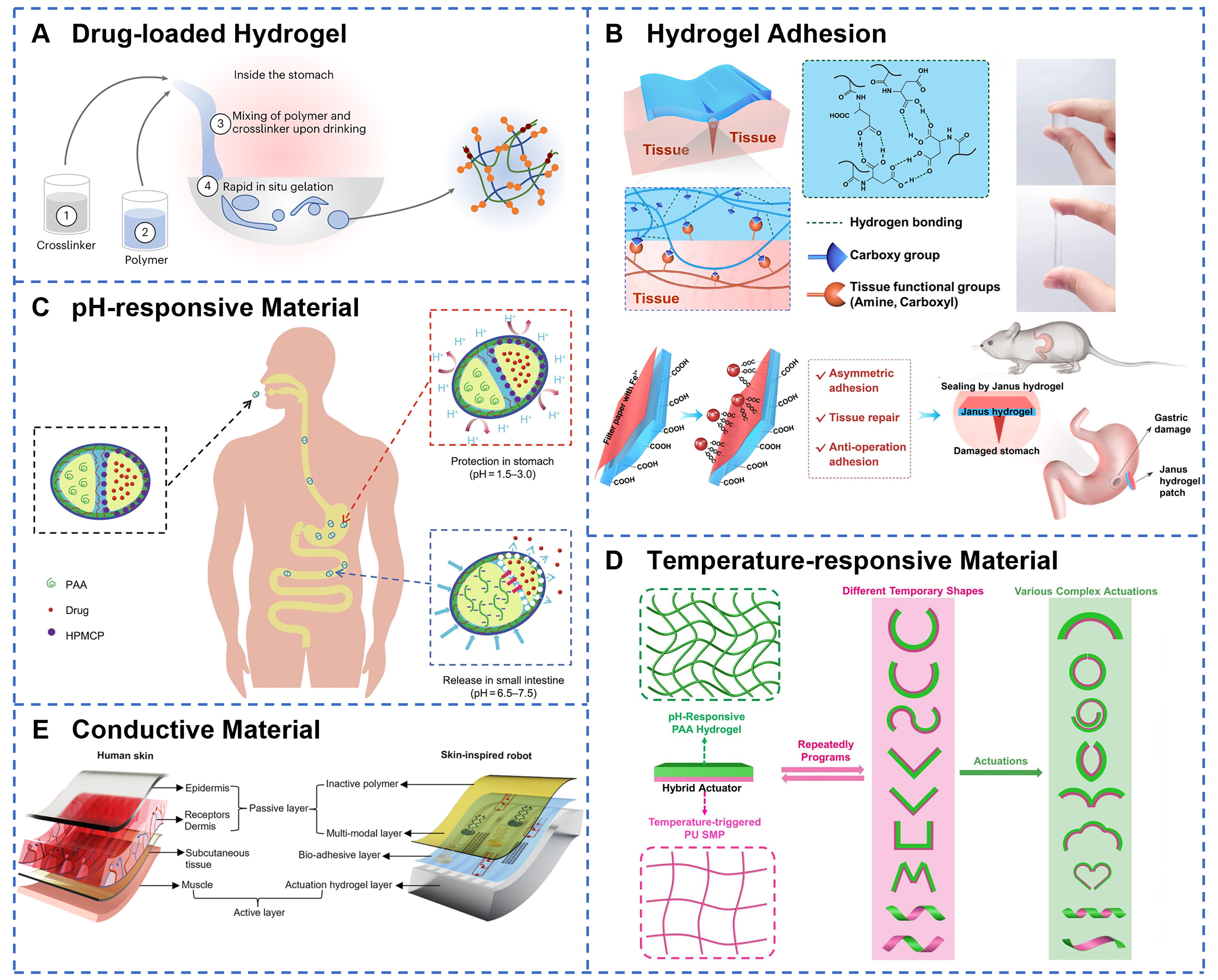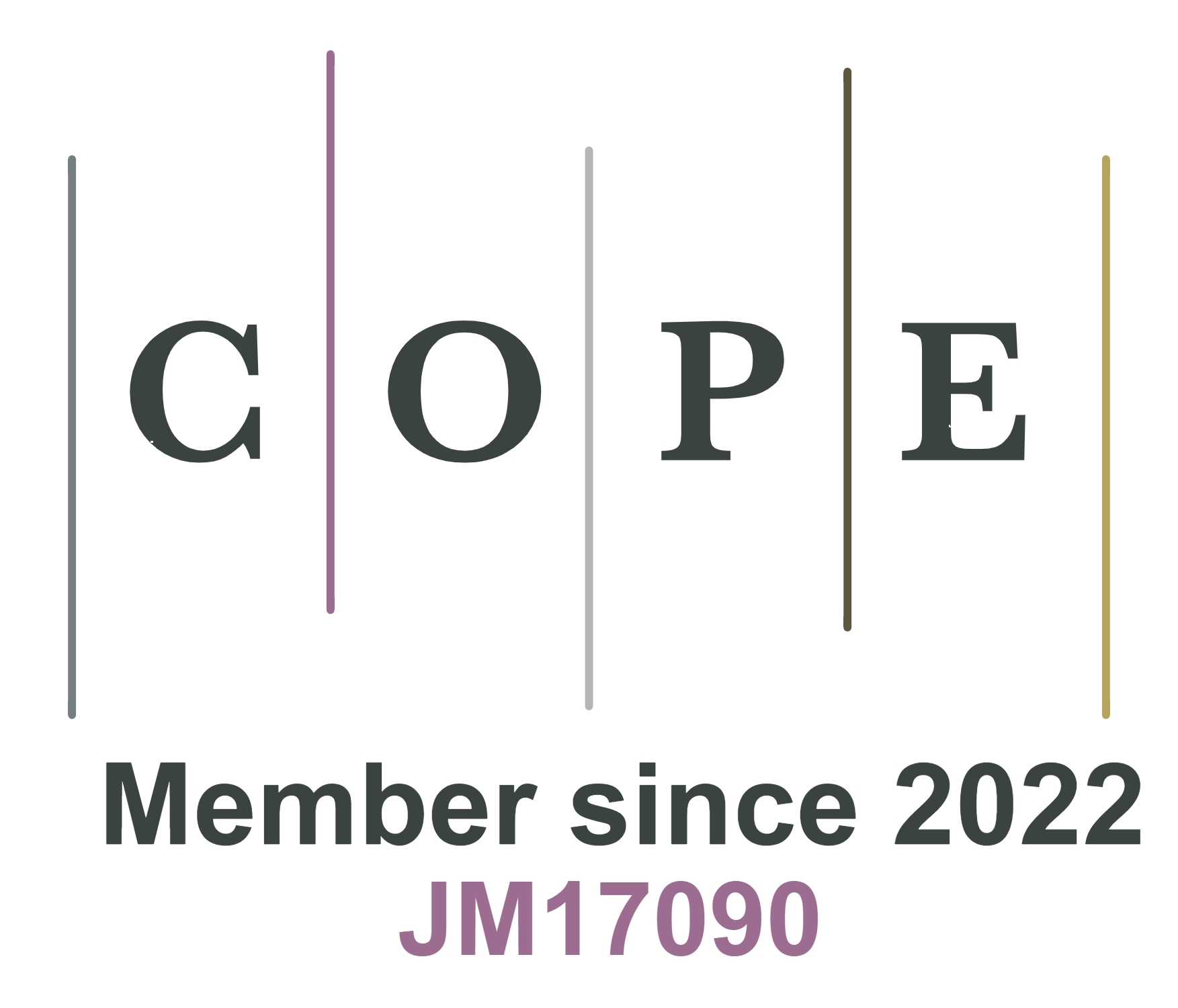fig2
Figure 2. Material selection strategies for GI soft robots. (A) Liquid in situ-forming tough hydrogels form in vivo through sequential oral administration of crosslinker and polymer solutions, utilizing alginate and four-arm PEG-maleimide networks to create tough double-network systems capable of controlled drug release. Reprinted with permission from[57]. Copyright 2024, Springer Nature; (B) Poly(N-acryloyl aspartic acid) hydrogels demonstrate strong tissue adhesion through hydrogen bond crosslinked networks with Janus patch design, enabling gastric perforation repair while preventing. Reprinted with permission from[58]. Copyright 2022, Elsevier Ltd; (C) Ca-alginate-chitosan/protamine/silica capsules provide gastric protection for encapsulated indomethacin via acid-resistant composite shells, then enable rapid and controlled drug release in small intestine through pH-triggered opening of microchannels. Reprinted with permission from[63]. Copyright 2023, Elsevier Ltd; (D) Different response shapes of a novel SMP/hydrogel hybrid actuator. Reprinted with permission from[68]. Copyright 2023, MDPI; (E) Soft robot design mimics natural skin’s hierarchical structure, integrating electronic sensing layers with artificial muscle components for adaptive robotic functionality. Reprinted with permission from[80]. Copyright 2024, Springer Nature. GI: Gastrointestinal; SMP: shape memory polymer.











